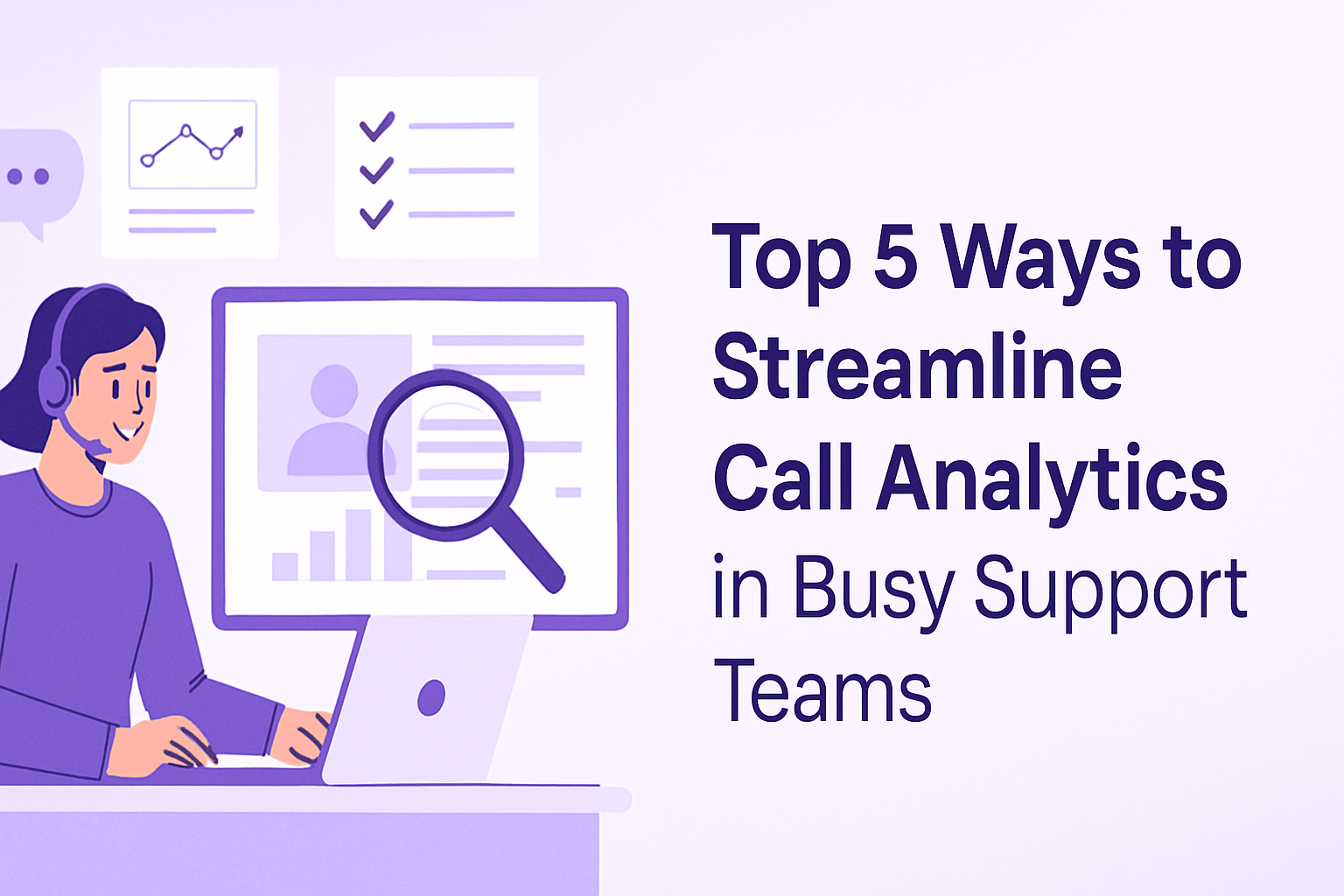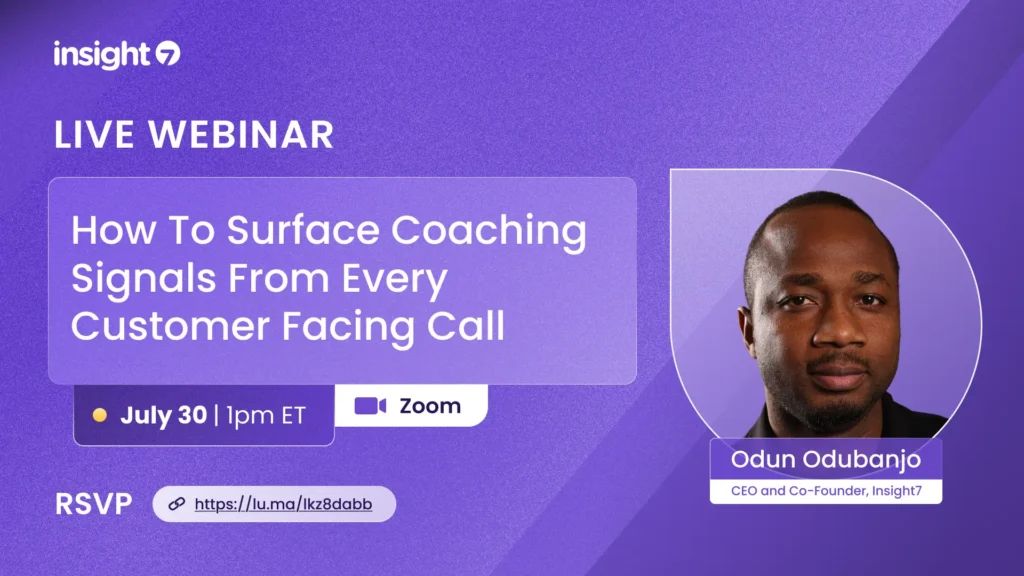The Complete Guide to Predictive Call Analytics for Contact Centers
-
Hello Insight
- 10 min read
The Complete Guide to Predictive Call Analytics for Contact Centers
Predictive call analytics is revolutionizing the way contact centers operate, providing valuable insights that drive better decision-making and enhance customer interactions. By leveraging advanced analytics, organizations can transform raw call data into actionable strategies that improve performance, increase customer satisfaction, and boost overall efficiency. This guide will delve into the fundamentals of predictive call analytics, its importance in modern contact centers, and how organizations can effectively implement these solutions to enhance their operations.
The Role of Predictive Call Analytics in Modern Contact Centers
In today’s fast-paced business environment, contact centers must adapt quickly to changing customer expectations and market dynamics. Predictive call analytics has become essential for organizations striving to stay competitive. This approach shifts the focus from merely reacting to issues after they arise to proactively anticipating customer needs and behaviors. By analyzing past call data and identifying patterns, contact centers can streamline operations, optimize agent performance, and enhance the overall customer experience.
To make this work effectively, organizations need robust technology and a culture that embraces data-driven decision-making.
What is Predictive Call Analytics?
Predictive call analytics refers to the use of advanced algorithms and machine learning techniques to analyze call data and forecast future customer behavior. Unlike traditional analytics, which focuses on historical data and past performance, predictive analytics emphasizes anticipating trends and outcomes based on insights derived from various data sources.
Core Capabilities:
- Enhanced Customer Insights: Organizations can gain a deeper understanding of customer sentiments and preferences, allowing for more tailored interactions.
- Improved Operational Efficiency: By predicting call volumes and trends, contact centers can optimize staffing and resource allocation.
- Proactive Quality Management: Predictive analytics enables early identification of potential service issues, allowing teams to address them before they escalate.
Strategic Value: This proactive approach fosters better alignment across teams, as marketing, sales, and customer service can work together to create a unified customer experience.
Why Are Consultants and Insight-Seeking Personnel Investing in Predictive Call Analytics?
Organizations are increasingly moving away from traditional analytics methods due to several compelling factors:
Key Drivers:
- Inefficiencies in Traditional Methods: Many organizations still rely on manual analysis of call data, which is time-consuming and prone to error. Predictive analytics automates this process, providing real-time insights.
- Speed of Implementation: Predictive analytics allows businesses to respond to trends and issues more rapidly than reactive approaches, significantly impacting customer satisfaction.
- Personalization and Targeting: By understanding customer behaviors and preferences, organizations can create more personalized experiences, which enhances customer loyalty.
- Optimization of Resources: Predictive analytics provides insights that help organizations allocate resources more effectively, ensuring that the right agents are available for the right calls at the right times.
What Data Powers Predictive Call Analytics?
To build reliable predictive models, organizations must gather and analyze diverse data sources:
Data Sources:
- Call Transcripts: Text data generated from recorded calls provides insights into customer sentiments and agent performance.
- CRM Systems: Data from platforms like Salesforce and HubSpot can be integrated to enrich customer profiles and interactions.
- Feedback Channels: Insights from feedback and survey tools enhance understanding of customer satisfaction and areas for improvement.
Accuracy Benefit: The more comprehensive the data, the more accurate the predictions. By leveraging multiple data sources, organizations can obtain a holistic view of customer interactions.
Key Components of a Predictive Call Analytics Stack
Stack Overview: A robust predictive call analytics stack consists of several critical components that work together to deliver insights.
Component Descriptions:
- Data Collection Layer: Captures data from various sources, including call recordings, CRM systems, and customer feedback platforms.
- Processing Engine: Uses algorithms to analyze data and identify patterns, trends, and anomalies.
- Analysis Dashboard: Provides visual representations of data, allowing teams to easily interpret insights and make informed decisions.
- Machine Learning Models: These models continuously learn from new data, improving the accuracy of predictions over time.
- Reporting Tools: Deliver actionable insights to stakeholders, enabling quick decision-making.
Quality Emphasis: The effectiveness of predictive analytics depends not just on the data but also on the quality and interpretability of the insights generated.
Success Dependency: High-quality input signals are essential for achieving reliable outcomes.
How Does Predictive Call Analytics Work Step by Step?
Step 1: Data Collection
Data is gathered from various sources, including recorded calls, CRM systems, and customer feedback channels.
Step 2: Data Processing
The collected data undergoes processing, where algorithms convert raw data into structured formats suitable for analysis.
Step 3: Pattern Identification
The analytics engine identifies key patterns in customer interactions, such as common complaints or behavioral trends.
- Sentiment Analysis: Understanding customers' emotional responses during calls.
- Agent Performance Metrics: Evaluating how agents handle calls and respond to customer needs.
Step 4: Predictive Modeling
Machine learning models are trained on historical data to forecast future behaviors, such as predicting when call volumes will spike.
Step 5: Real-Time Analysis
As new data comes in, it is analyzed in real-time, allowing organizations to adapt their strategies quickly.
Step 6: Insight Delivery
Insights are delivered through dashboards and reports, highlighting key findings and recommending actions.
- Performance Improvement Suggestions: Recommendations for agent training based on identified weaknesses.
- Customer Engagement Strategies: Tailored suggestions to enhance customer interactions based on predictive insights.
Where Can Consultants and Insight-Seeking Personnel Apply Predictive Call Analytics?
Use Case 1: Performance Optimization
- Prediction Method: Analyze historical call data to forecast agent performance.
- Recommended Action: Implement targeted training programs for underperforming agents.
Use Case 2: Customer Experience Enhancement
- Analysis Approach: Utilize sentiment analysis to understand customer emotions during interactions.
- Follow-Up Action: Adjust communication strategies based on customer feedback.
Use Case 3: Resource Allocation
- Identification Method: Predict high call volume periods.
- Proactive Scheduling: Ensure adequate staffing during peak times to maintain service levels.
Use Case 4: Sales Strategy Improvement
- Forecasting Approach: Track leads and conversion rates to identify successful sales tactics.
- Optimization Action: Refine sales approaches based on successful call patterns.
What Tools Can You Use for Predictive Call Analytics?
Organizations should look for platforms that offer robust analytics capabilities, including call recording, sentiment analysis, and real-time reporting.
Comparison Table:
| Feature | Insight7 | Traditional Alternative |
|---|---|---|
| Call Recording | Yes | Limited |
| Sentiment Analysis | Advanced | Basic |
| Real-Time Insights | Yes | Delayed |
| Integration Capabilities | Extensive | Minimal |
| Custom Reporting | Flexible | Rigid |
Common Pitfalls in Predictive Call Analytics Implementation
Context Warning: Many organizations encounter challenges when implementing predictive analytics due to a lack of strategy and understanding.
Major Pitfalls:
- Data Silos: Failure to integrate data from various sources can lead to incomplete insights.
- Lack of Stakeholder Buy-In: Without support from key stakeholders, initiatives may struggle to gain traction.
- Overlooking Data Quality: Poor-quality data can result in inaccurate predictions, undermining trust in the analytics process.
Success Foundation: Avoiding these pitfalls requires a clear strategy, stakeholder involvement, and a focus on data quality.
How Do You Get Started with Insight7?
Step 1: Integration with Existing Systems
Ensure the platform can seamlessly integrate with your current CRM and call systems.
Step 2: Data Synchronization
Establish processes for continuous data flow from various sources into the Insight7 platform.
Step 3: Configuration Options
Customize the platform to align with your specific analytics needs and goals.
Step 4: Training with Historical Data
Utilize past call data to train the analytics models effectively.
Step 5: Customization for Stakeholders
Tailor dashboards and reports to meet the needs of different teams within your organization.
Step 6: Ongoing Optimization
Regularly review analytics outcomes and refine processes to enhance effectiveness.
What Is The Best Predictive Call Analytics Setup?
ROI Optimization: To maximize returns, organizations should focus on best practices that ensure effective implementation of predictive call analytics.
Best Practices:
- Diverse Data Sources: Utilize a variety of data inputs to improve accuracy.
- Stakeholder Involvement: Engage all relevant teams to ensure alignment and support.
- Historical Data Review: Analyze previous data to inform current strategies.
- Regular Review Cadence: Schedule ongoing assessments to refine analytics processes.
- Automation Integration: Leverage automation to streamline data processing.
Building a Predictive Call Analytics Strategy That Scales
A scalable predictive call analytics strategy requires cross-functional alignment and collaboration. Teams must define shared goals and regularly communicate insights. By integrating diverse data sources, organizations can enhance the accuracy of their predictive models. Continuous refinement is essential for adapting to evolving customer needs and ensuring sustained success.
Predictive Call Analytics Benchmarks and Success Metrics
Evaluation Framework: Establishing clear benchmarks is crucial for measuring the impact of predictive call analytics.
Core Metrics:
- Customer Satisfaction Score: Measures overall customer satisfaction with interactions.
- First Call Resolution Rate: Evaluates the percentage of issues resolved on the first call.
- Agent Performance Metrics: Tracks individual agent performance over time.
- Call Volume Trends: Monitors fluctuations in call volume to anticipate staffing needs.
- Operational Efficiency Ratio: Assesses the efficiency of contact center operations.
Universal Principle: The fundamental goal of predictive call analytics is to enable better decision-making and actions that drive organizational success.
Frequently Asked Questions
Q: What is predictive call analytics?
A: Predictive call analytics involves using advanced algorithms to analyze call data and forecast future customer behavior.
Q: How does it differ from traditional analytics?
A: Traditional analytics focuses on historical data, whereas predictive analytics emphasizes anticipating future trends.
Q: What platforms support predictive call analytics?
A: Platforms like Insight7 offer comprehensive capabilities, including integration with CRM systems and advanced analytics.
Q: What data is needed for effective predictive analytics?
A: Ideal data sources include call transcripts, CRM data, and customer feedback.
Q: How long does implementation typically take?
A: Implementation timelines vary based on organizational complexity but can often be achieved within weeks.
Q: What security measures are in place for data protection?
A: Leading platforms implement robust security protocols to ensure compliance with industry regulations.






